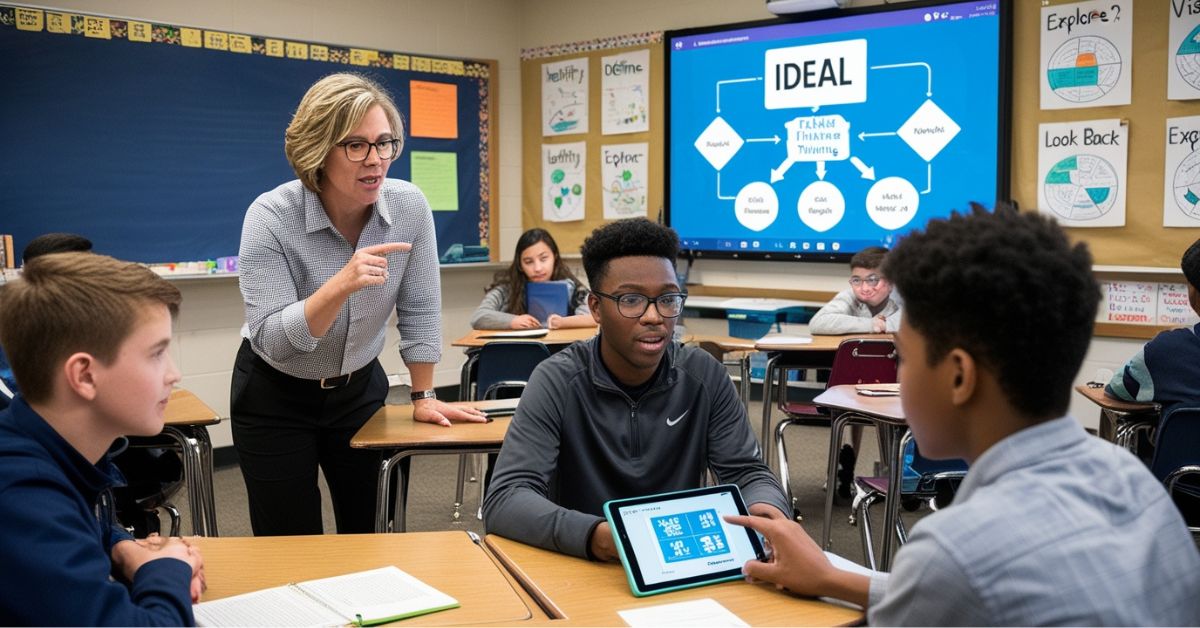Introduction
A teacher serves as a role model. He pays close attention to students’ academic development while placing equal emphasis on their personal development. Teachers as role models, can affect pupils’ attitudes, behaviors, and values. A teacher can motivate students to live meaningful lives.A teacher serves as a role model who influences students in the classroom and in their development as productive citizens. A teacher’s effect goes beyond knowledge, as the teacher embodies character and shapes students’ attitudes, behaviors, and values through words and exemplars. Teachers inspire students to foster solid character and an optimistic perspective by exemplifying integrity, empathy, and patience. Teachers nurture critical thinkers, resilience, and a sense of duty by holding their students accountable for the excellence of their whole person. An exemplary teacher is not only instrumental to the student academically but also instills students to become compassionate, confident citizens of society who can, therefore, engage as citizens to make an intentional contribution to society.
Impact of Teachers on Students’ Lives
Teachers serve as role models for their students, having a significant impact on their lives. They embody values, ethics, and attitudes that affect pupils’ character and behavior in addition to providing knowledge. Teachers serve as role models for empathy, patience, and respect, promoting a good and nurturing educational environment. Their enthusiasm for studying and dedication to their job motivate students to pursue their goals and desires.

Teachers as Beacons of Inspiration
Teachers model integrity and honesty for their students, encouraging them to make ethical decisions in their lives. Teachers become beacons of inspiration by encouraging students to achieve, personal growth, and becoming responsible members of society through their guidance and support.
Multifaceted Role of Teachers in the Classroom
A teacher’s function in the classroom is complex and crucial in moulding students’ learning experiences and personal growth. They are educators, facilitators, and mentors who share their knowledge, skills, and principles with others. They foster a welcoming and inclusive learning atmosphere. They promote active involvement and critical thinking.
Adapting Teaching Methods for Student Success
Teachers adapt their teaching approaches to accommodate different learning styles, ensuring that all students succeed. Furthermore, teachers encourage and motivate students to achieve their greatest potential by instilling a love of learning and curiosity in them. They also assess and provide constructive criticism to students, guiding their progress. Finally, instructors play a critical role in developing well-rounded individuals who are prepared for future success and responsible citizenship.

Teachers as Role Models of Character
Characteristic teachers serve as role models for telling the truth, carrying out tasks, earning and returning trust, respecting others, and living a moral life. A teacher communicates information, tradition, modern-day issues, and solutions to the pupils’ problems. In this chapter, we will consider various ways in which teachers can serve as role models.
Be Humble
A humble teacher is capable of objectively analyzing his performance, whether in classroom management or otherwise. They should take the time to listen to the students. A humble teacher understands his need to learn and is willing to change his way of thinking.
Be Sympathetic
It is difficult to teach with empathy. Sympathetic educators pay attention to their students. They are aware of their students’ personal and social conditions. They will have a grasp of the world’s complexities as well as the experiences of others. Empathy-based instruction will assist students in reducing anxiety and tension. It fosters a positive learning atmosphere.
Be Organized
Organizational skills assist teachers in maintaining classroom order and optimizing learning opportunities for their students. A teacher should be prepared with effective teaching and assessment methods. It assists students in sitting in their right spot at the proper time.
Be Knowledgeable
A great teacher is extremely educated about the subject. Teachers who are knowledgeable in their field typically provide pupils with a solid practical basis. In class, they have greater communication abilities. Such abilities will allow pupils to interact more successfully with teachers.
Be Active in Extracurricular Activities
When instructors participate in extracurricular activities, they can positively impact students and form strong relationships with them. It assists students in expanding their social support networks and achieving positive outcomes.
Conclusion
Teachers play a very important role in a student’s advancement in academic learning, personal growth, and character development. By modeling behavior, teachers influence students’ values, attitudes, and behaviors while helping them toward becoming responsible and caring human beings. Through their authenticity and care, teachers help students acquire a passion for learning, critical thinking skills, and persistence while getting them ready to solve challenges after they leave school. Teachers help create a sense of belonging and safety in the classroom by modeling humility, empathy, organization, and mastery of subject matter. This allows students to take risks and learn and grow as individuals. Teachers not only influence and support their students in the classroom, but they also help, support, and guide them in becoming thoughtful, caring individuals who live a responsible and meaningful life as citizens outside of the classroom. The teachers who are “great” do more than “teach”; they inspire and empower their students to make a lasting difference in their communities.
FAQs
1. Why is the teacher a role model?
Teachers are role models because they impact students’ values, attitudes, and behaviors through their words and actions. They motivate students by modeling characteristics such as integrity, understanding, and patience in developing students into socially responsible and caring citizens.
2. In what ways do teachers make a difference to students ?
The role teachers play in students’ personal and social development is critical by fostering critical thinking skills, resilience, and ethical decision-making in young people. Teachers create the context for an enjoyable, positive learning experience that leads students to become a valued member of society with a well-rounded education.
3. What are the characteristics of a good teacher?
An effective teacher is humble, empathetic, organized, knowledgeable, and involved in enriching and extracurricular activities in their school. These characteristics allow them to be supportive when guiding students and create a supportive classroom environment filled with excitement for learning.
4. How do teachers change their teaching practices to help students be successful?
Teachers can differentiate their activities by recognizing the needs of different learners, utilizing innovative instructional practices, and providing meaningful and constructive feedback. They can motivate students to learn by enhancing curiosity, using critical thinking skills, and developing a passion for learning.
You may also like to read:- How to Promote Equity in the Classroom for Student Success
- How to Dominate Your Online Business With 5 Proven Digital Marketing Strategies
- How to Cultivate Critical Thinking and Problem-Solving Skills in Classroom
- Top Proven Mental Health Strategies for Schools in 2025-26
- Time Management for Teachers: How to Plan, Prioritize, and Perform Better
- How Parental Involvement in Education Shapes a Child’s Growth and Success




I really loved this topic